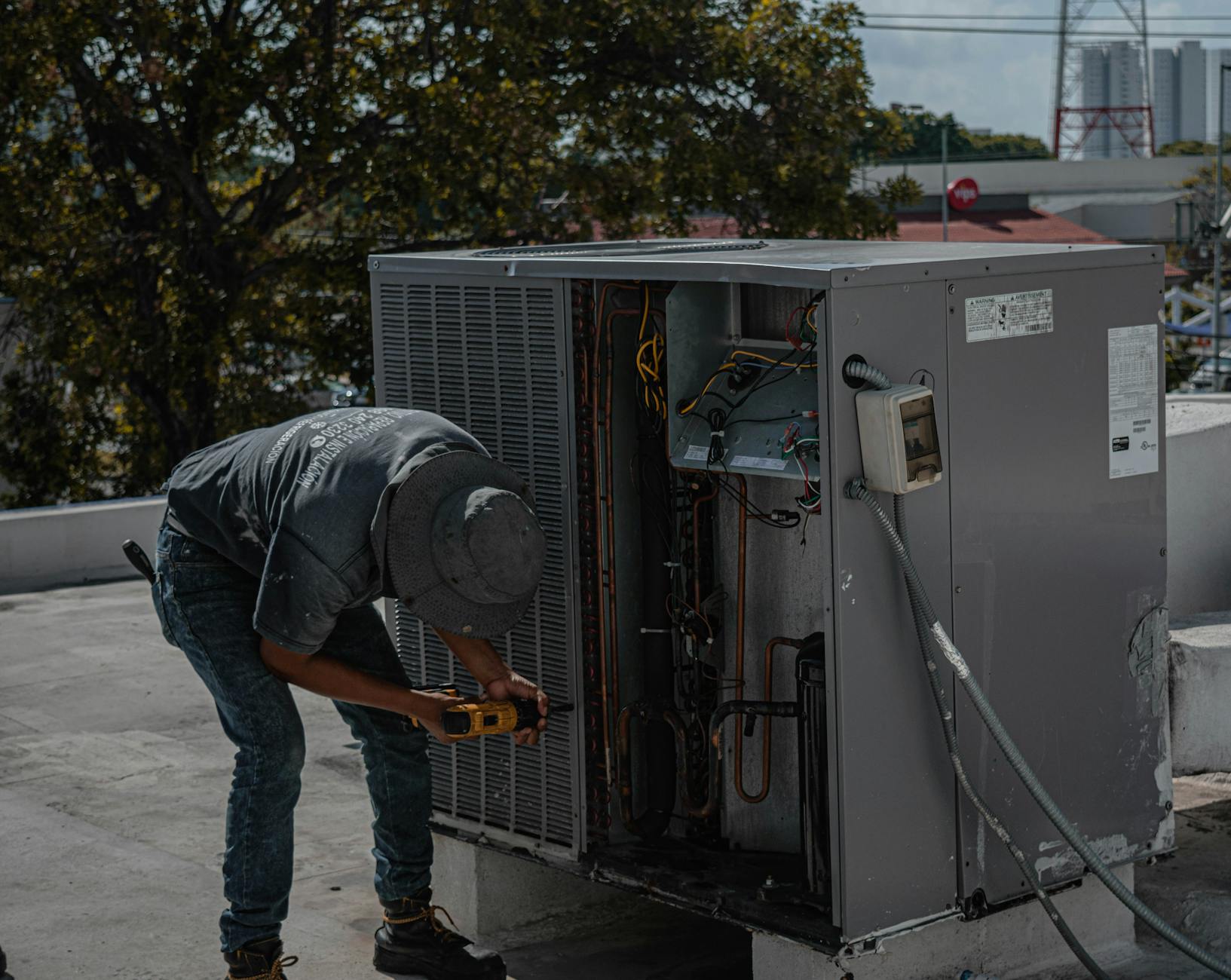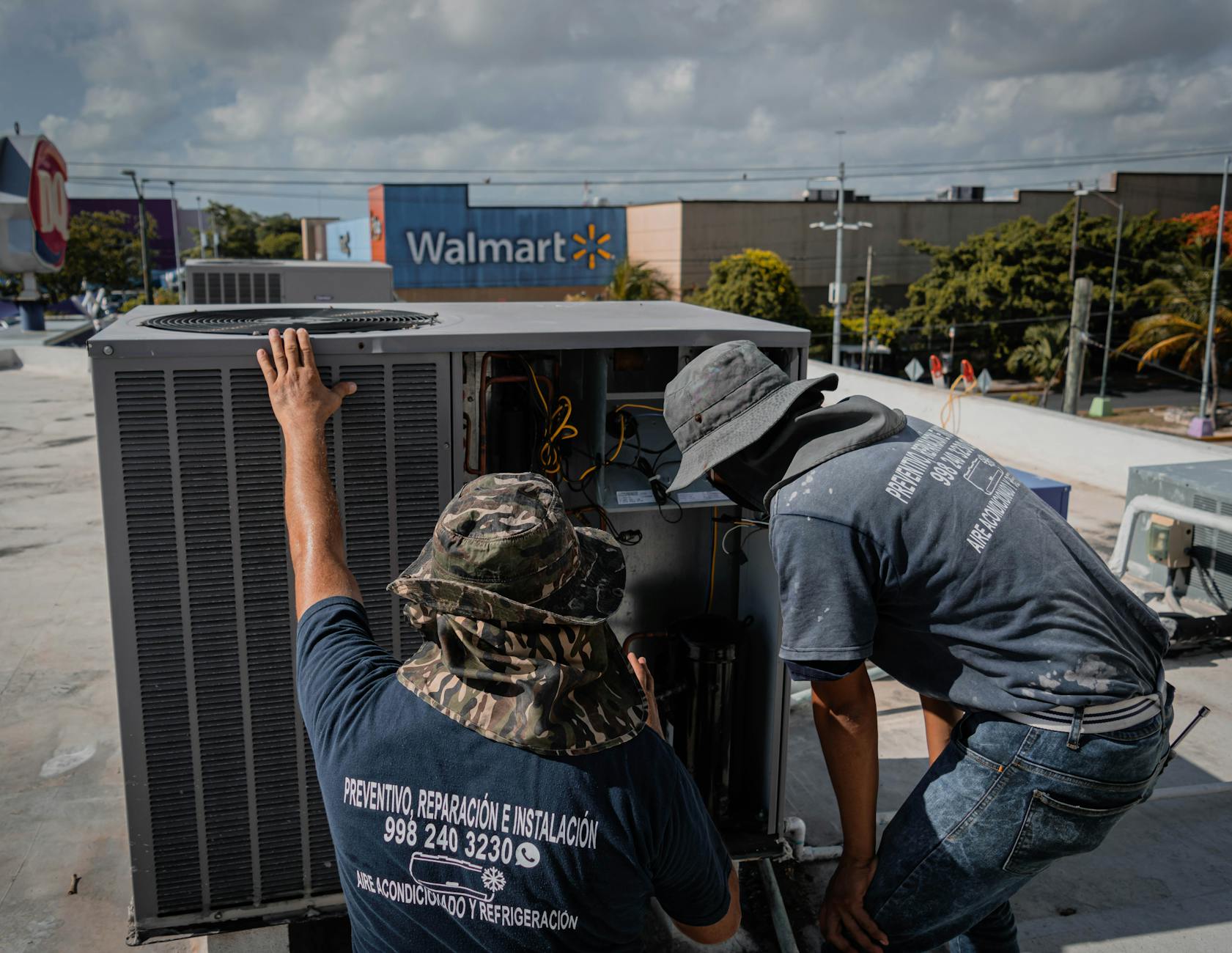Your HVAC system does more than control temperature—it impacts your home’s energy bills and your daily comfort. But even the best systems won’t perform well if installed incorrectly. Poor installation can lead to higher energy costs, uneven heating or cooling, and even equipment failure. A proper setup ensures you get the most out of your investment, keeping your home comfortable and efficient year-round.
Understanding how HVAC systems work is critical when it comes to improving home comfort and energy efficiency. These systems not only regulate indoor climates but also impact air quality and energy consumption, making them an essential part of modern life. Below, we break down the fundamentals of HVAC systems and their role in keeping your home comfortable and efficient.
HVAC is an acronym for Heating, Ventilation, and Air Conditioning, which represents the three primary functions of the system. Each component plays a critical role in creating a balanced indoor environment.
Each of these components is interconnected, helping to regulate temperature, maintain airflow, and ensure healthy air quality.
 Photo by Gustav Mahler
Photo by Gustav Mahler
Your HVAC system is more than just a convenience—it’s essential for maintaining a stable and comfortable indoor climate. These systems are designed to balance temperature, air circulation, and humidity levels, making your home livable throughout the year. But what exactly does that mean for you?
Think of your HVAC system as the heart of your home. Just as your heart keeps blood pumping and ensures survival, HVAC keeps air flowing and regulates comfort levels. Without it, homes would feel stuffy, irregularly heated, or overly dry.
In short, HVAC systems are the unsung heroes behind efficient and comfortable living. Understanding how they work empowers you to make better choices for maintenance, upgrades, and overall energy savings.
A properly installed HVAC system doesn’t just “work”—it works efficiently, reliably, and effectively. An incorrect setup, even with the highest-quality systems, can throw off performance, drive up utility bills, and even shorten the lifespan of your equipment. Let’s break down the key reasons proper installation makes all the difference.
Did you know an improperly installed HVAC system can waste up to 30% more energy? When the unit isn’t aligned correctly, or components like ductwork are poorly sealed, your HVAC has to work harder to heat or cool the home. This increased workload translates to higher energy bills and unnecessary wear and tear. On the flip side, proper installation ensures:
Think of it like driving a car with underinflated tires—you’ll burn more fuel and reduce performance. A properly installed HVAC system “runs on full cylinders” and keeps energy use optimized.
Your HVAC system isn’t a short-term investment—it should last you 10–15 years, or even longer with regular maintenance. But improper installation can cut that lifespan significantly by stressing components. For example:
Proper installation is like building a sturdy foundation for a house—it keeps everything running smoothly, even under pressure. If you want your HVAC system to go the distance, starting with the right setup is essential.
 Photo by José Andrés Pacheco Cortes
Photo by José Andrés Pacheco Cortes
Your home’s air quality isn’t just about what’s outside—it’s also about what’s inside your HVAC system. Poor installation can result in:
A correctly installed system ensures that every element, from ducts to filters, meets its full potential. Cleaner air means a healthier living space for you and your family—especially if someone has allergies or respiratory conditions.
Ever walked into one room that’s ice-cold and another that feels like a sauna? That’s what happens when HVAC systems aren’t properly installed. Issues like uneven duct distribution or poor calibration can make comfort levels vary drastically across a home. Proper installation ensures:
Think of your HVAC system like a symphony orchestra. When every piece is tuned perfectly, it creates harmonious, consistent comfort throughout your home.
Proper installation isn’t just a technicality—it’s the cornerstone of an HVAC system that delivers real value. Without it, you’re leaving efficiency, comfort, and system life on the table.
Installing an HVAC system isn’t just about plugging in a unit and hoping for the best. It requires precision, proper planning, and attention to every detail to ensure optimal performance. However, installation mistakes happen more often than you’d think, leading to inefficiencies, higher energy costs, and discomfort. Let’s explore some common errors that cause homeowners trouble.
 Photo by ready made
Photo by ready made
Getting the wrong size HVAC unit for your home is like trying to wear shoes two sizes too small—uncomfortable and ineffective. Many people mistakenly believe that bigger is always better, but an oversized unit will cycle on and off too frequently, leading to:
On the other hand, an undersized unit struggles to meet the demands of the space. You’ll experience uneven heating or cooling, uncomfortable living conditions, and a system that’s constantly overworking itself.
To avoid this, calculations like Manual J load measurements are critical during installation. These measurements consider factors such as your home’s size, insulation, and window placement to ensure the unit fits like a glove.
The ductwork is like the veins of your HVAC system, delivering air throughout your home. Yet, poorly designed duct systems can be one of the biggest culprits behind inefficiency. Here are some common issues:
A well-designed duct system ensures consistent airflow and temperature throughout your home. It’s like having a well-laid-out road system—smooth, efficient, and free of bottlenecks.
Local building codes and industry standards are there for good reasons—to ensure safety, efficiency, and long-term system performance. Ignoring them during installation can lead to:
For example, many regions require specific clearances around the outdoor unit for proper airflow. Skipping such details can choke the system, just like wearing a scarf over your nose limits your ability to breathe freely.
Hiring licensed professionals familiar with local regulations is essential. They’ll not only install the system correctly but ensure everything follows the rules, giving you peace of mind.
Mistakes during HVAC installation aren’t just technical slip-ups—they can have real, lasting consequences for your home’s comfort and energy efficiency. Avoiding these errors requires expertise, careful planning, and a commitment to doing the job right. Keep these common pitfalls in mind as you plan your installation.
Hiring professionals for HVAC installation provides critical advantages that ensure a smoother, more efficient system. From precise setup to performance guarantees, professional installation delivers peace of mind and long-term value.
 Photo by RDNE Stock project
Photo by RDNE Stock project
When it comes to your HVAC installation, cutting corners isn’t an option. Professionals bring years of expertise, ensuring the system is installed correctly and efficiently. Why does that matter?
This expertise removes the guesswork from installation. Think of it like hiring a seasoned chef to prepare a gourmet meal versus trying a complicated recipe yourself. The difference shows in the results.
Investing in professional installation often comes with added perks, including performance guarantees and warranties. While doing it yourself might seem cheaper, skipping professional help can cost you more down the line. Here’s why:
These guarantees can be a financial safety net. Think of a professional installation as buying insurance for your HVAC system—it’s protection you’ll be glad to have if issues arise.
Once your HVAC system is installed, the work isn’t over. Regular maintenance and follow-up care are essential to keep it running efficiently and extend its lifespan. Think of your HVAC like a car—it needs routine check-ups to stay in peak condition and avoid costly breakdowns.
 Photo by José Andrés Pacheco Cortes
Photo by José Andrés Pacheco Cortes
Regularly scheduled maintenance isn’t just about keeping your system clean—it’s about protecting your investment and ensuring consistent performance. Here are several notable benefits:
Think of it this way: would you drive a car for years without an oil change? Just like a vehicle, your HVAC system needs regular attention to perform its best.
Even the most reliable systems can show signs of trouble. Catching issues early can prevent more significant problems down the road. Keep an eye out for these common indicators:
The sooner you tackle these warning signs, the simpler (and cheaper) the solution tends to be. Staying proactive with maintenance will save you headaches and money while keeping your home consistently comfortable.
A proper HVAC installation is essential for both energy efficiency and consistent comfort. It ensures every component works together seamlessly, reducing energy costs and prolonging system life. Poor installation, on the other hand, can lead to higher bills, uneven temperatures, and avoidable repairs.
Partnering with a professional gives you peace of mind, not just functionality. They guarantee precision, efficiency, and adherence to safety standards. Don’t leave your home’s air quality and comfort to chance—invest in proper installation and enjoy the long-term benefits. Ready for an upgrade? Contact a trusted HVAC professional today!
